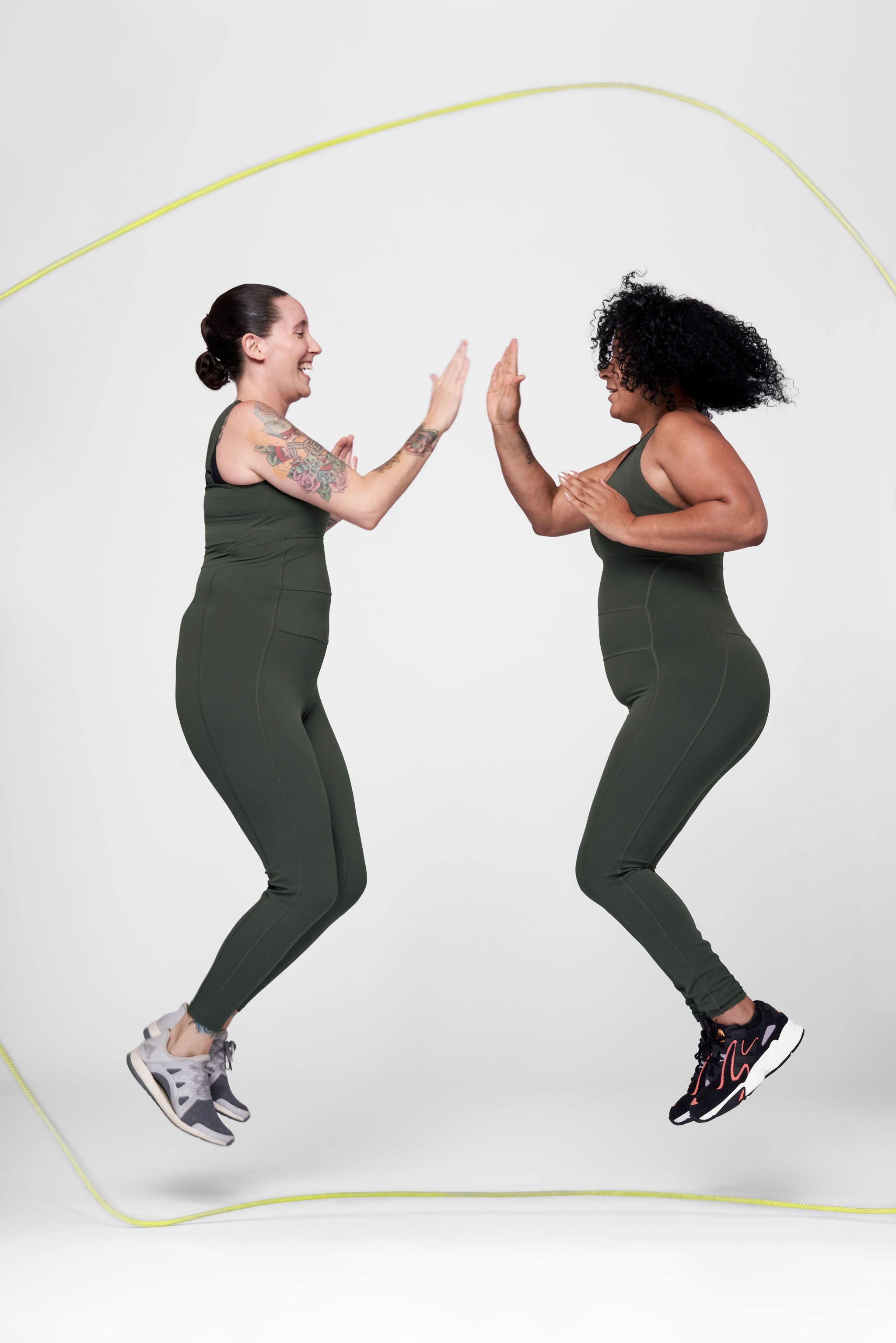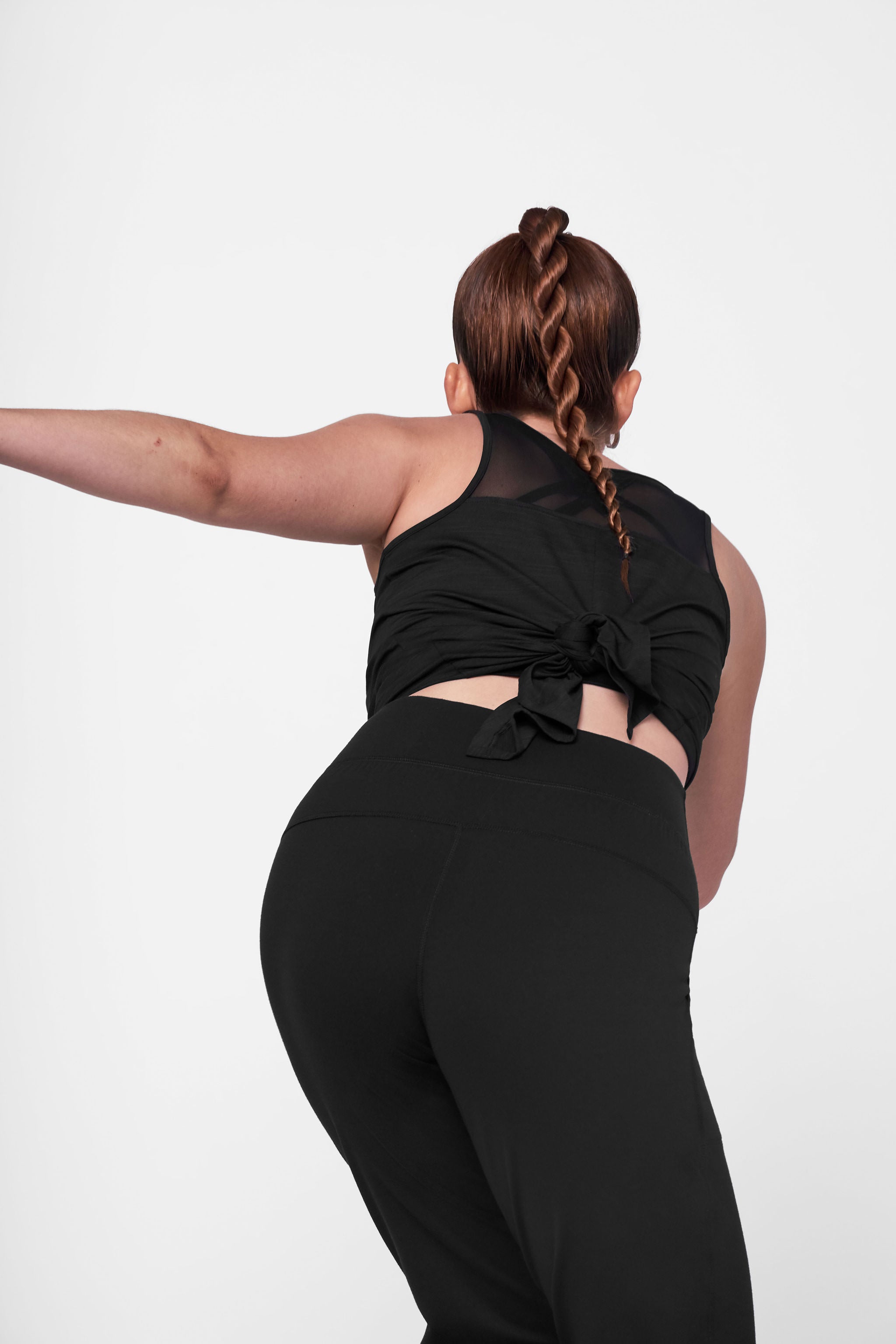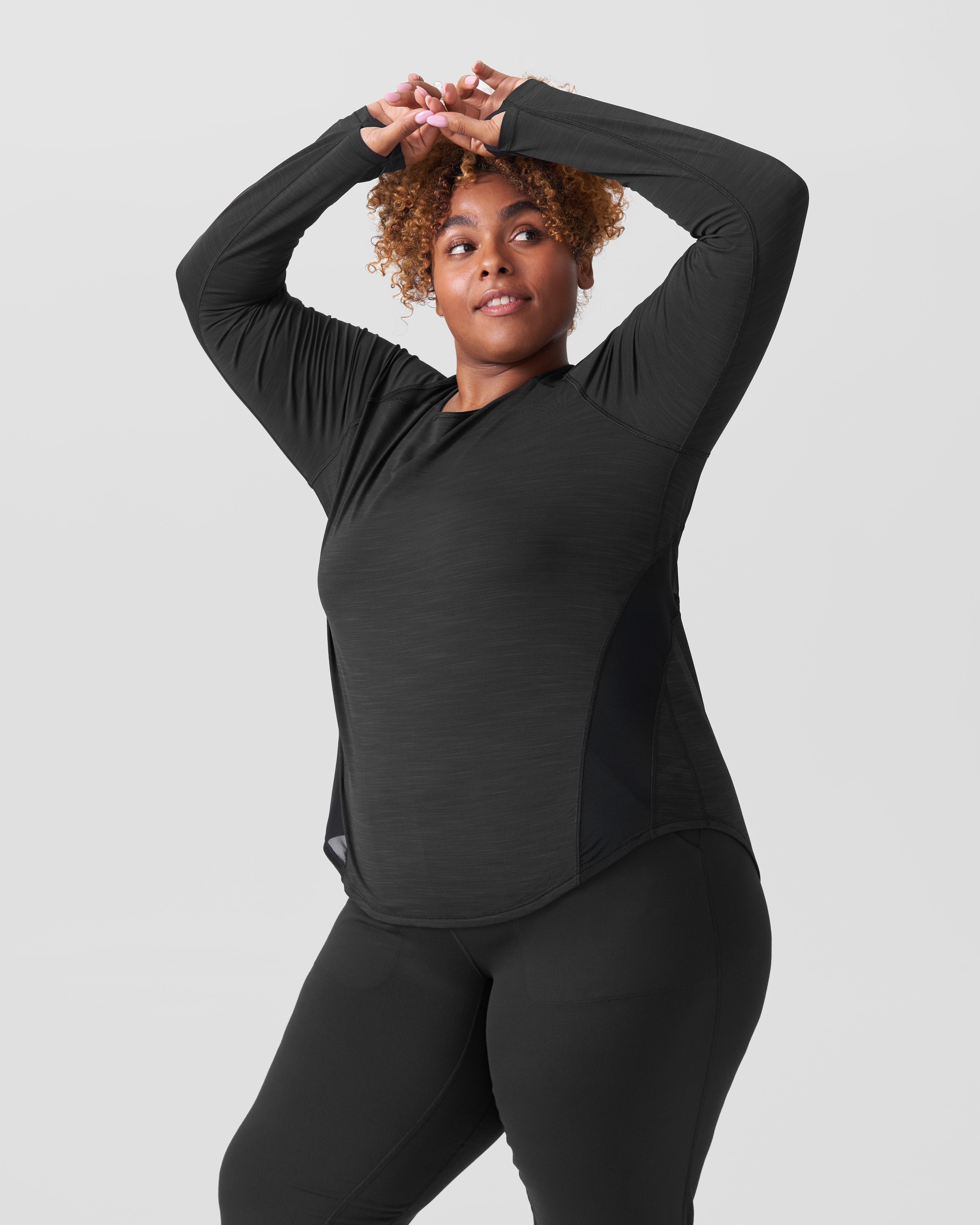
There’s No Such Thing As the “Right” Way to Be Active
By: Amanda Richards
When I think of activewear, certain imagery comes to mind: the hardcore athlete; the sweat dripping off the body; the aggressive confrontation of a body in extreme motion. These tropes are authentic to many people’s experience of motion, and they’re also valid.
But there’s more than one way to be active. The imposition of one specific idea of activity creates a disconnect between the type of people who are “allowed” to be active and the truth. Recognizing that our approach to activity and fitness are allowed to be different is part of how we take real steps towards diversifying fitness spaces. Contrary to much of the messaging we see on a regular basis, activewear and active lifestyle are, in fact, for everyone — no matter how, where, or when you move.
Below, we spoke to different subjects about the way they like to move, and how being active connects them to both themselves and their community. Read what they have to say below.
Melissa Quayle, Liselle Savitri, and Shameina Monzon
Double Dutch Empire


Melissa, Liselle, and Shameina are all members of Double Dutch Empire, a New York City-based organization that teaches double dutch to anyone who wants to learn, and welcomes experts who want to flex their skills. They contend that anyone can jump double dutch — in fact, they’ve seen it happen. Double Dutch Empire is all about building confidence and community through jumping rope. Here, three of their core members talk about their approach to movement and fitness.
On their preferred way to move…
Melissa: My preferred method of moving is through double dutch or through soccer. I really enjoy team sports. Something to take your mind off of exercising and just focusing on a goal or having fun like in double dutch, which is my favorite. The lack of understanding that you're exercising — there's just doing it.
Liselle: I love double dutch because, well it reminds me of childhood, first of all. So it's very nostalgic. It takes me back to the playground and then it makes me feel like I'm getting a workout, but I'm not really working out. You're constantly moving, but at the same time it doesn't feel like it because you're having so much fun. So even if you're just turning the ropes, it still feels like you're getting that workout. Everyone's involved. If you're not jumping or turning, you're on the sidelines cheering people on or waiting for your jump. It's just like constantly a good time.
On how they use movement to connect with themselves...
Liselle: I don't like classes and I don't like running, because there's not really anything to take my mind off of what my body is doing. With double dutch, it's so much more fun because I'm challenging myself every time I go in there and every time I see someone else or watch someone else learn, you're inspired to do more and to try it again and again and again. I think that that's something very special. I think it brings out something really important in myself — a sense of improv and fun I wouldn’t find in any other exercise
Shameina: I think for me, double dutch is self care. It’s that freedom to just kind of do whatever and be whatever, however, and just have a good time. I can feel my spirit dancing almost when I'm jumping, you know what I mean? It just feels good. I'm having a good time. I've never seen anyone not have a good time. So it always feels good and it starts from the inside.
On how double dutch connects them to their community...
Liselle: Once you pull out ropes, people just swarm. No one really jumps anymore, so when people see you doing it, it brings them around. The ropes themselves attract community.
Melissa: Strangers become family the minute they start jumping together. The most satisfying thing is watching a person learn for the first time, and then turn around and teach another person to do it. Somebody who didn't believe they could do something four minutes earlier is now an expert. It's incredible to watch people break these boundaries and move past their fears. Especially with women, it's a fear of looking silly, of trying something they've never done before.
On who double dutch is for…
Liselle: We believe every able bodied person should be able to double dutch. There should be nothing holding you back. We’ve had three-year-olds to 90-year-old double dutch with us. People of every size, shape, identity. It’s amazing to watch everyone’s transformation; the confidence they get from just trying.
Melissa: The moving past trying into succeeding, and then having everyone high-five you — that’s pretty awesome. That’s the philosophy. No one should be excluded. For us, double dutch is for everyone.
Shop Their Looks
Nina Kossoff
Founder, ThemsHealth


Nina Kossoff is a brand strategist, queer wellness info curator, and gender justice. Tired of fitness and wellness literature operating along a strict gender binary (think Men’s Health and Women’s Health magazines), they created ThemsHealth, a community-built resource for non-binary wellness with information on health, fitness, sexuality, mental health, identity and nutrition. Nina found their way to ThemsHealth by exploring queer fitness and wellness spaces. Below, they explain what being active means to them, and why establishing queer fitness spaces is vital.
On their preferred way to move…
My preferred way to move is just in response to whatever I'm feeling at any given day. It’s not really into one kind of movement but rather whatever's speaking to me in that moment.
On what being active means to them…
It means having a connection with my own body. I think that there's a lot of pressure to do something, whether it's to lose weight or get toned or something specific. But it ends up being for other people. But I think being active is just about what resonates with yourself at any given time.
On how they use movement to connect with their own body…
Moving creates and understanding of how far I can progress in 10 minutes, or a day, or a week, or a month. I measure against myself, but not for any ultimate goal, just to create the understanding that I can do different things on different days, and do well or do badly but that neither are a reflection of my worth. It’s an understanding that a lot of progress is gradual.
On how they use movement to connect with their community…
As a queer person, it's hard to find places that feel safe for movement. Any kind of group fitness activity can be kind of worrisome. At gyms, you wonder if your body is “allowed” to be there, or if your gender is accepted. But ultimately, movement and activity also presents opportunities to create spaces uniquely for your community. There are classes that are specifically for queer people, for trans people. There are classes for plus size people, for people of color. It subverts the typical fitness idea that you need to look and act a certain way. And it allows you to connect with people in a safe space. I've been able to create new networks of friends and people this way.
Shop Their Looks
Camila Aldet
Singer, Dancer, Actress


When we met Camila, she was singing and tap dancing on a street in Williamsburg. Traveling to New York City from Argentina, she unapologetically practiced her art in the middle of a crowded Brooklyn street. Using a public space to sing and perform is the kind of activity that isn’t for everyone, but there’s something to be said about following your bliss and bringing movement with you wherever you go.
On what fitness means to her...
My understanding of “being fit” has evolved. In the beginning, it was the classic idea of being fit and toned. Of going to the gym. I gave that up, and now I stay active and conscious to prevent injury. For me, that’s the most important thing — taking care of my body so I’m ready to dance and perform.
On how tap dancing connects her with her own body…
I’m a fan of rhythm, and tap is dance plus music. In reality, dancers are also musicians — many people don’t see it that way, but we are. I like tap dancing, because it’s my body generating rhythm, and that helps me sing.
On how tap dancing connects her with her community…
In Argentina, tap isn’t very well known. I like dancing on the streets where people who may have never heard of tap dancing can see me and become interested in it. I want people to enter that world, and learn more about it.
Shop Her Looks
Leah V
Activist, Author, Model


Leah says that ever since she was little, the world has told her what to believe and how to act. Now, she tries to subvert all of those expectations in her daily life, including with her approach to fitness and wellness. She’s an international influencer, author, and educator.
On her preferred way to move…
Dancing. I love to twerk. I like to just go off the vibe of the room, go off the vibe of the music, and move my body to the beat. There was a time when I was very, very, self-conscious and couldn't dance in front of people because I'm like, ‘I'm a plus-size woman, and I'm Muslim, and people are going to look at me a certain kind of way.’ I wanted to shatter that. When I dance it's honestly an act of rebellion. I really love dancing in public now. Sometimes I will just dance by myself and everyone else is on the wall and I'm in the middle doing my thing.
On what being active means to her...
A lot of times when I post exercise videos, I get trolls talking crap about me being fat and also moving my body. I'm just trying to be healthy and make sure I feel good about myself. I feel very sluggish when I don't move around, so I like to preach that you can be fit at any size. A lot of people think that only thin or straight size bodies can be fit or enjoy fitness. I tell people that you can definitely get in there and do it, even if it's low impact. But it definitely means to me being comfortable in your own body and being unapologetic.
On how she uses movement to connect with herself…
I just moved to New York from Detroit six months ago. It’s a madhouse in New York. People are running around doing all types of stuff, and I just need some zen. So when I go to the gym and move my body, it's honestly like a spiritual connection for me. I get to kind of just be quiet and still, and then focus on one part of my body and one thought, instead of thousands.
On how she uses movement to connect with her community...
Every time I post an exercise video or dance video on Instagram, they end up being the posts with the highest engagement. People don’t usually see bodies like mine moving and flexible, lifting weights or stretching. That’s why I post them — even though I might look hit, even though I don't have any makeup on. I'm showing people that I’m sweating, and I'm raw. They can connect with me as a person, as an influencer, as a plus-size body, as a human being. I've had people message me and say, “Oh my God, I'm going to start to exercise,” or “I’m going to start dancing because you really inspire me.” They just get out there and move. That’s why I post those videos, to connect with people in that way.













